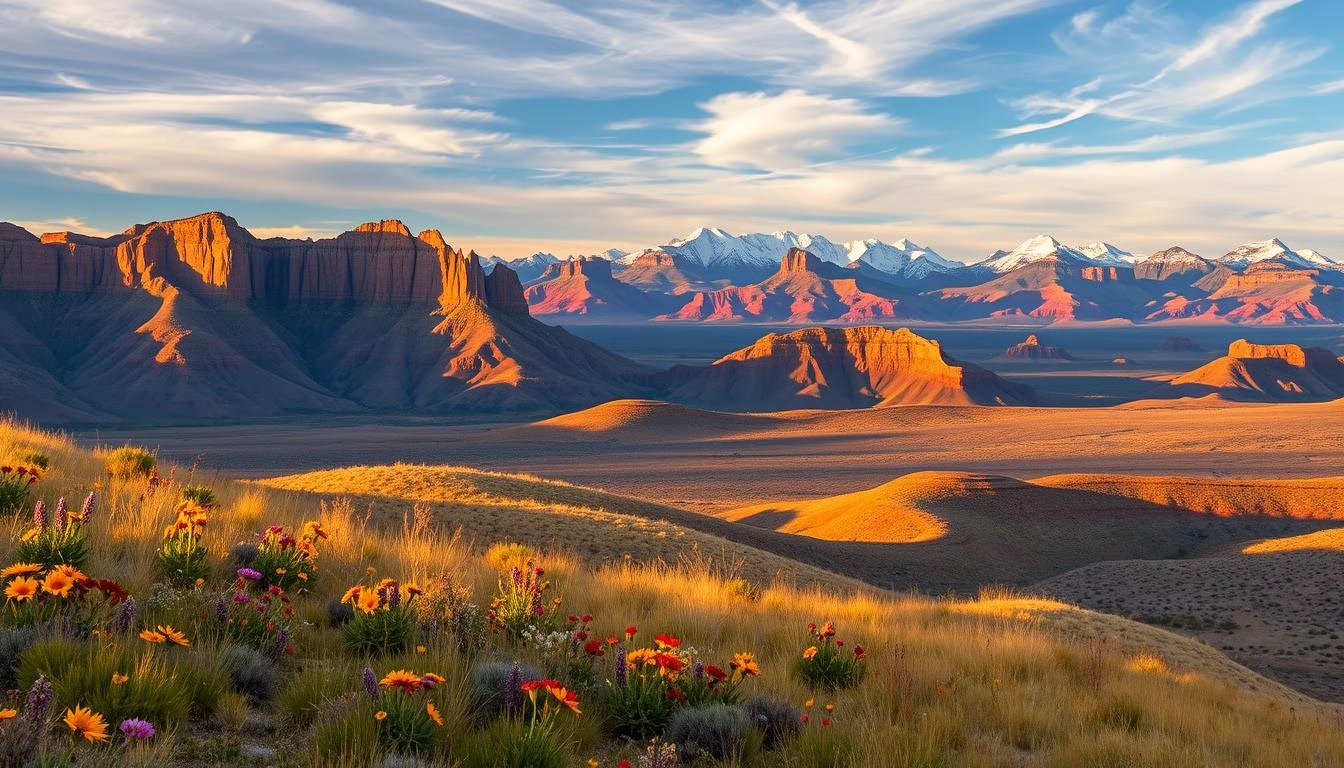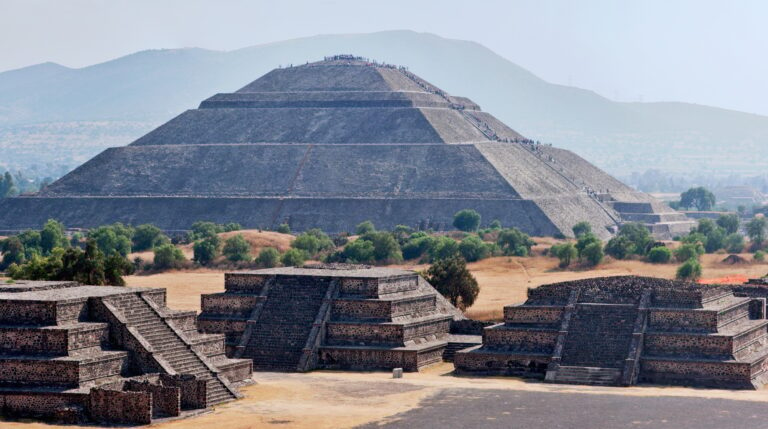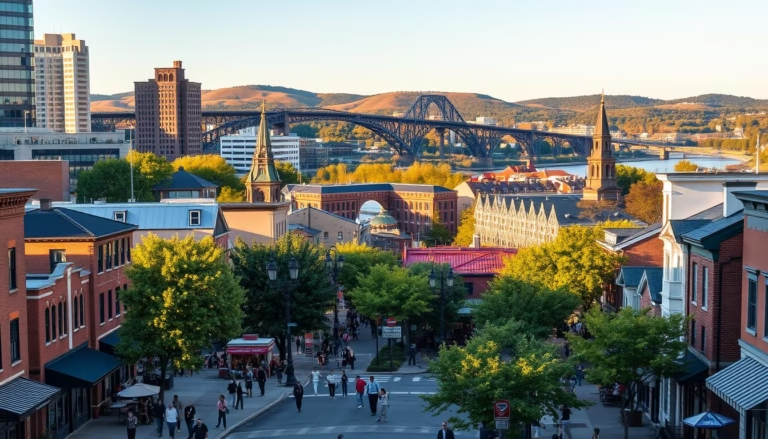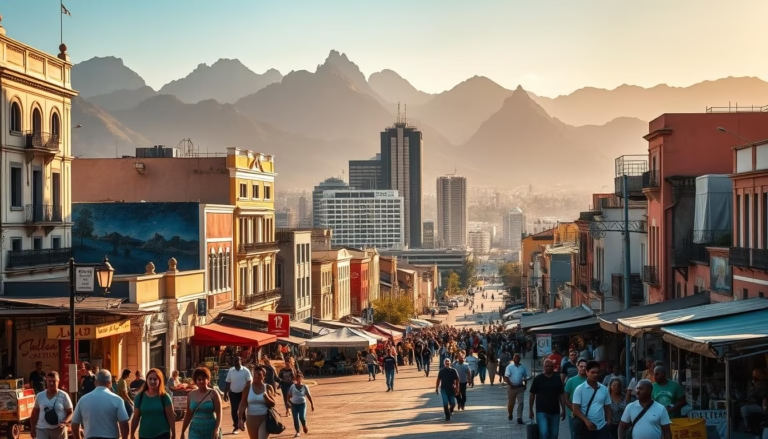Discover the Best Cities in New Mexico to Live and Visit
Few places blend heritage and horizons like this southwestern state, where adobe architecture meets fiery sunsets over desert mesas. With over half its population tracing roots to Latino traditions, the region thrives as a living mosaic of Native American, Spanish, and Mexican legacies. This cultural richness pulses through markets, festivals, and even neighborhood layouts.
From alpine forests to ochre-colored badlands, the terrain shifts dramatically within short drives. Urban hubs buzz with art galleries and tech startups, while smaller towns preserve centuries-old customs. Whether you crave chile-infused cuisine or starlit desert skies, communities here offer distinct flavors of life.
Our guide explores destinations balancing modern comforts with timeless character. You’ll discover how certain areas attract astronomers for crystal-clear night views, while others draw artists inspired by turquoise skies. We’ll break down housing trends, local economies, and hidden gems that guidebooks often miss.
Key Takeaways
- Southwestern communities blend ancient traditions with contemporary innovation
- Diverse landscapes range from high deserts to lush mountain valleys
- Over 50% of residents celebrate Latino cultural heritage
- Unique architecture and cuisine reflect centuries of cultural exchange
- Areas cater to both adventurous spirits and those seeking peaceful retreats
- Vibrant arts scenes coexist with growing tech and research sectors
Introduction: Discovering New Mexico’s Charm
A land where chile peppers spice both cuisine and culture, this southwestern state reveals surprises at every turn. Crisp winter mornings give way to wildflower-covered valleys by spring, while summer thunderstorms paint skies in violet hues. Come autumn, golden cottonwoods frame ancient pueblos like living postcards.
What Makes This Region Unique
Three culinary capitals – Native American, Spanish, and Mexican – collide deliciously here. Over half the population celebrates Latino roots through festivals and family recipes. The aroma of roasting green chiles perfumes autumn air, while vibrant murals tell stories of ancestral people.
Life Amidst the Landscapes
Snowboarders carve slopes at Angel Fire while hikers explore Carlsbad Caverns’ depths. Artists still chase the light that inspired O’Keeffe’s bold landscapes. Modern labs studying space sit beside 17th-century missions, proving history and innovation coexist seamlessly here.
Whether you’re hunting for starry skies or spicy enchiladas, diverse activities connect visitors to this region’s soul. Retirees find peaceful adobe homes, while entrepreneurs tap into growing tech hubs. Every season writes a new chapter in this living storybook.
New Mexico’s Allure: Culture, History, and Climate
Where else can you touch 1,000-year-old walls and ski on the same day? This region thrums with stories etched in adobe and whispered through pine forests. Nearly 300 days of annual sunshine illuminate both ancient petroglyphs and solar farms, proving time here moves in layers rather than straight lines.
Footprints Across Centuries
Human history here stretches back 11,000 years – older than Egypt’s pyramids. The Ancestral Puebloans built multi-story dwellings at sites like Chaco Canyon, while Spanish explorers established the Camino Real trade route in 1598. These crossroads still shape the diverse cultural heritage visible in Santa Fe’s Palace of Governors.
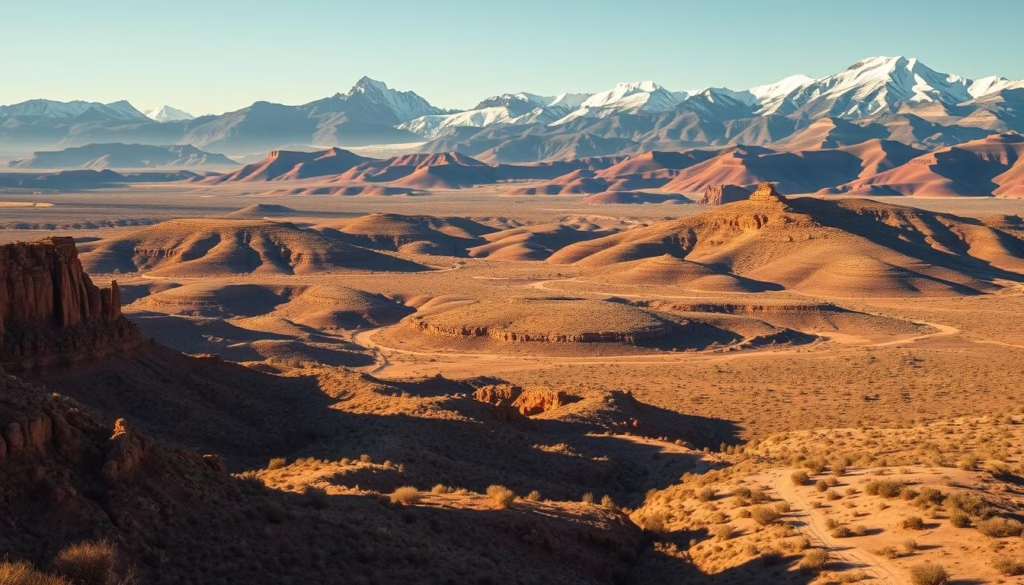
Nature’s Perfect Rhythm
Mornings often dawn at 70°F even in January, while summer nights require light sweaters. This high desert climate preserves ancient artifacts and fuels outdoor adventures year-round. “The air here carries memory and possibility equally,” notes a local historian, describing how crisp nights reveal Milky Way swirls unseen in humid regions.
From mesas holding ancestral wisdom to skies that birthed the atomic age, this land rewards those who listen closely. Its dry heat cures chilies and preserves 17th-century frescoes alike – a testament to enduring balance.
Real Estate and Cost of Living in the Land of Enchantment
Financial flexibility meets southwestern charm in this sun-drenched region. While adobe homes blend into crimson cliffs, modern developments cater to diverse budgets. The state’s real estate market offers surprising value compared to neighboring areas.
Home Price Trends and Median Home Prices
Current median home prices hover near $287,752 – nearly half the national average for similar properties. “You get 30% more square footage here than in Arizona,” notes Santa Fe broker Maria Gutierrez. First-time buyers find starter homes under $200,000, while luxury estates with mountain views rarely exceed $800,000.
Prices rose 12% since 2020, but remain 22% below peak 2007 levels. This stability attracts remote workers and retirees seeking affordable upgrades. Northern regions near Taos command higher values, while southern areas offer budget-friendly options.
Monthly Expenses Compared to National Average
Residents enjoy a cost of living 5% below U.S. averages. Housing costs run 8% lower, with utilities 10% cheaper due to abundant solar energy. A family of four spends about $3,800 monthly excluding mortgage – $200 less than typical American households.
Groceries and healthcare match national rates, but no sales tax on food helps budgets stretch further. These savings allow more spending on local experiences – from hot air balloon festivals to soaking in natural hot springs.
Benefits and Opportunities for Residents
Forward-thinking policies and cultural warmth create exceptional living conditions here. The region leads national efforts in family support through pioneering social initiatives. Educational excellence pairs with diverse career paths across thriving industries.
Excellent Education and Employment Prospects
Schools like La Cueva High and Early College Academy rank among America’s top 5% for STEM programs. Los Alamos High graduates often enter national labs, continuing the area’s legacy of scientific achievement. Higher education opportunities shine through research partnerships at world-class universities.
| Industry | Job Growth | Average Salary |
|---|---|---|
| Renewable Energy | +18% | $72,400 |
| Healthcare | +12% | $65,200 |
| Tech Research | +22% | $85,600 |
Community Well-Being and Social Programs
New Mexico made history as the first state offering free childcare to 80% of families. This initiative alone reduced childhood poverty rates by 37% since 2022. Neighborhood networks organize cultural exchanges and skill-sharing events monthly.
“Our childcare program lets parents pursue careers while keeping kids safe,” explains Santa Fe resident Lila Montoya. “It’s changed how families plan their futures.”
Affordable housing programs help first-time buyers find homes near employment hubs. Community centers provide free wellness checkups and career coaching, ensuring people thrive at every life stage. These efforts create environments where personal growth and collective progress align perfectly.
best cities in new mexico to live and visit
Southwestern communities offer more than picturesque landscapes—they provide dynamic living experiences shaped by unique local advantages. Our analysis combines safety records, cultural vibrancy, and economic stability to spotlight standout destinations.
Top Rated Cities for Residents and Tourists
Los Alamos shines with its 96% employment rate and access to national laboratories. Median home prices here reflect premium STEM career opportunities. Rio Rancho attracts families with its 15% below-average crime rates and expanding tech parks.
- Corrales: Historic charm meets modern safety (8% above-average school ratings)
- Santa Fe: 300+ art galleries alongside 5-star healthcare facilities
- Taos: Adventure tourism hub with 22% annual population growth
City Ranking Insights and Data-Driven Analysis
Our evaluation matrix weighs seven critical factors:
| Metric | Weight | Top Performer |
|---|---|---|
| Job Growth | 20% | Los Alamos (+24%) |
| Housing Affordability | 18% | Silver City |
| Cultural Assets | 15% | Santa Fe |
Roswell’s UFO Museum draws 200,000 annual visitors while maintaining 89% resident satisfaction. Smaller towns like Corrales prove population size doesn’t dictate quality—their community gardens and walking trails foster strong social bonds.
Remote workers favor Taos for its fiber-optic infrastructure amidst mountain vistas. Retirees prioritize Silver City’s mild climate and low property taxes. Each location tells a different success story through data-driven excellence.
City Spotlight: Los Alamos – Atomic City and More
A community born from wartime secrecy now thrives as a beacon of innovation. Perched 7,000 feet above sea level, this mesa-top city blends atomic history with cutting-edge science. Crisp mountain air mingles with the hum of supercomputers at Los Alamos National Laboratory, where researchers tackle global challenges.
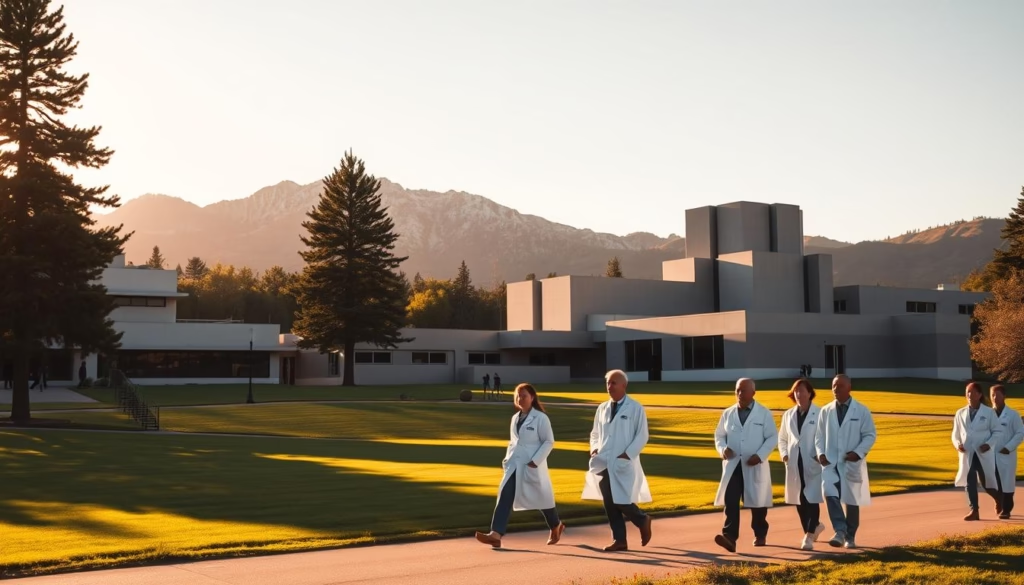
Economic Advantages and Research Opportunities
The median household income here soars to $161,532 – triple the national average. With 94% of adults holding college degrees, Los Alamos National Laboratory drives both employment and innovation. “Our work impacts everything from clean energy to space exploration,” shares a materials scientist at the facility.
Housing reflects this prosperity, with median home prices near $521,000. Despite costs 3% above U.S. averages, residents gain access to top-rated schools and crime rates 58% lower than similar towns. The 2.1% unemployment rate proves opportunities abound for skilled professionals.
Historical Impact of the Manhattan Project
Secret codes still linger in original WWII-era buildings downtown. What began as “Site Y” now welcomes visitors to museums explaining nuclear history. Former military barracks house coffee shops where physicists debate quantum theory.
This transformation from closed compound to vibrant city shows in cultural offerings. Hiking trails wind past ancient petroglyphs, while lecture series at Bradbury Science Museum make complex science accessible. The atomic age’s birthplace continues rewriting its legacy through peaceful innovation.
City Spotlight: Rio Rancho – Safety and Growth
Rio Rancho proves safety and opportunity aren’t mutually exclusive. With 112,358 residents, this thriving city combines suburban comfort with economic momentum. Families thrive here thanks to crime rates 29% below national averages – a key draw for those prioritizing security.
Balanced Living in Action
The local job market grew 3.4% last year, fueled by employers like Insight Lightning and UNM SRMC. Workers enjoy a healthy $96,302 median income while spending $8,606 monthly – smart budgeting made easier by no sales tax on groceries.
Housing remains accessible at a median home price of $329,203. New developments offer modern layouts near parks and tech hubs. Unemployment sits at 3.5%, lower than most southwestern communities.
Neighborhood watch programs and community centers strengthen social bonds. Residents describe it as “where career growth meets backyard barbecues.” From affordable homes to safe streets, Rio Rancho delivers what modern families value most.
